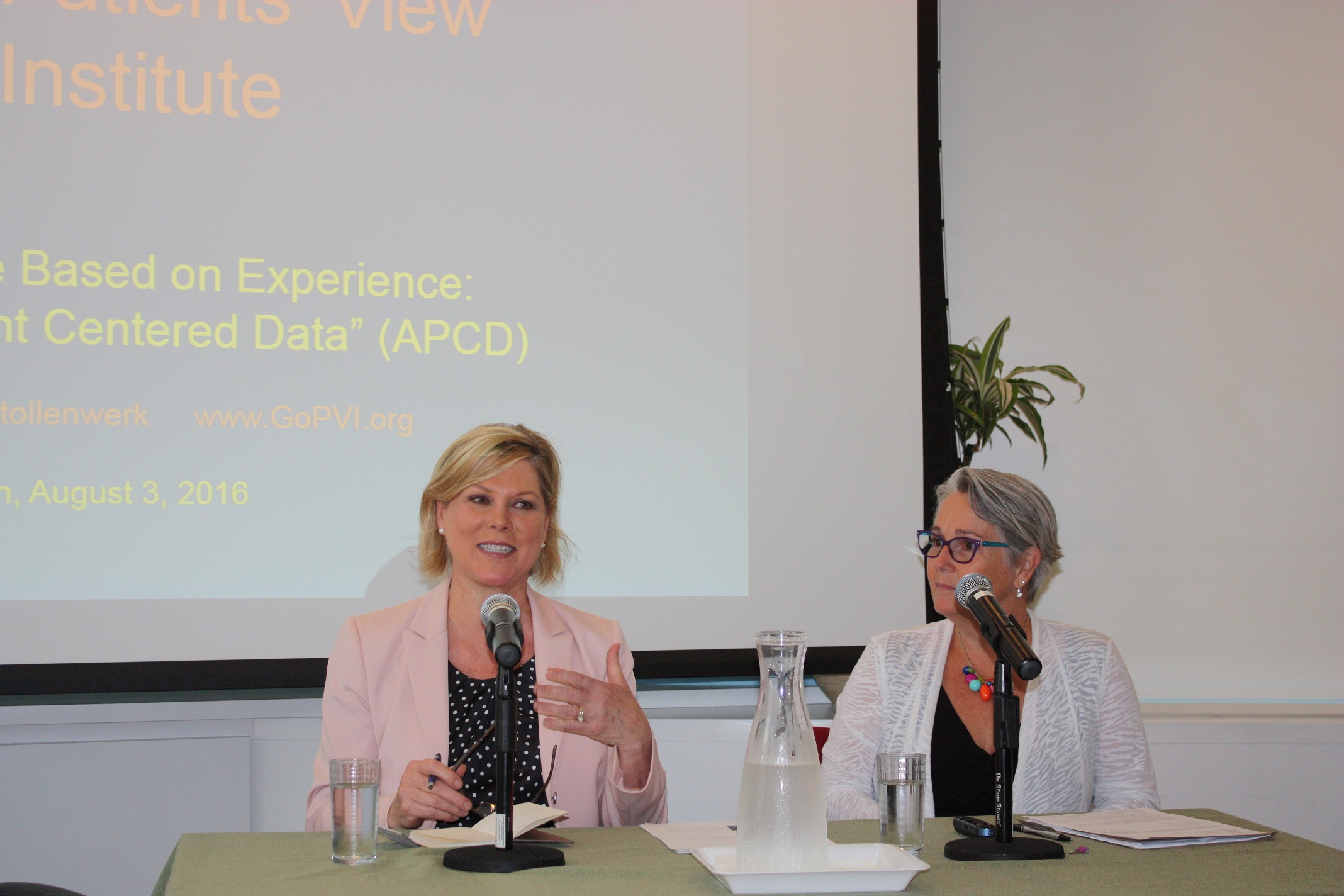Date
August 2, 2016
Related Links
View the PowerPoint slides from the event. What Consumers Want: A Conversation with Health Care ResearchersEstablished in 2014, PVI is a Rhode Island-based national nonprofit with a mission to organize and amplify the patient voice, so that patients can have more impact on the quality of care they receive. Ms. Stollenwerk and Ms. Mastors presented the methodology employed for gathering patient stories and creating data points that can be used not only to elevate the patient voice but also for education, advocacy, and culture change.
Ms. Stollenwerk and Ms. Mastors have backgrounds in health policy and traditional health quality data, but they also both have personal patient stories. These experiences drove them to establish PVI because there was not one organized, comprehensive database where they could find an aggregate of the patient voice and perspective. Although websites, such as Yelp, and social media, through Twitter and Facebook, are consistently used by patients to vent about poor care, those posts on people’s health care experience are not being collected, organized, and acted upon in a meaningful way.
In the two years since PVI’s inception, more than 1,000 patient stories have been collected and aggregated by using a tagging system that identifies traditional quality-type metrics for each story. Those metrics have been culled down to six basic principles: safety, empowerment, respect, information, affordability, and accountability. However, these principles are not as simple as they seem. For example, Ms. Stollenwerk described the respect principle as not only patients wanting respect from their caregivers, but also as patients wishing to see health care professionals treating one another with respect.
Ms. Stollenwerk and Ms. Mastors recounted how when they first started this work, many in the industry told them two things: (1) Patient experience and quality of care have nothing to do with each other and (2) If you try to gather stories, only the people with bad experiences will contribute. So far, neither prediction has come to pass for PVI. There is now much research showing that patient experience can directly affect quality of care. Additionally, PVI has found that patients are actually attuned to traditional quality metrics (e.g., hand washing, discussions about medications or prior surgeries) and not solely to amenity-type qualities, such as parking and the availability of a TV in hospital rooms. Additionally, many of the stories collected by PVI also reflect a remarkable number of good experiences. What Ms. Stollenwerk and Ms. Mastors pointed out is that each story is nuanced—rarely is a story entirely good or entirely bad—and these nuances are not often revealed in standard patient surveys.
Currently, PVI is using its data for education and policy. It recently worked on two projects with the National Quality Forum and American Institutes for Research on teasing out quality measures that reflect patient and family engagement, as well as on defining what it means for a quality measure to be patient centered. The next step is for PVI to refine its methodology. It has begun working with AcademyHealth to fine-tune and prove the credibility of its data collection methodology so that the data can be used for research.

